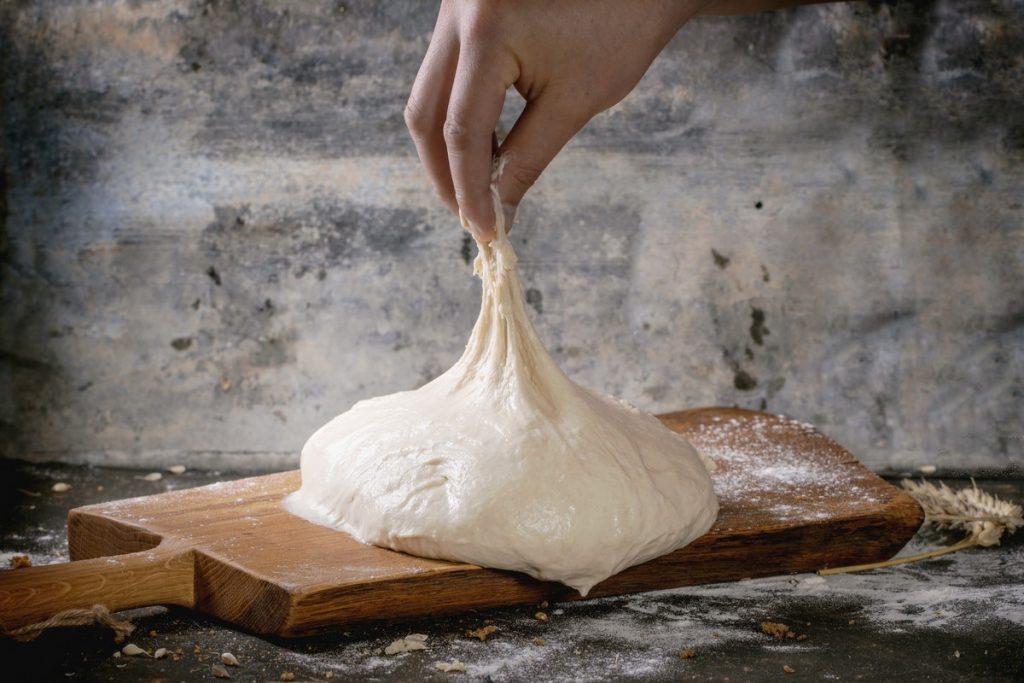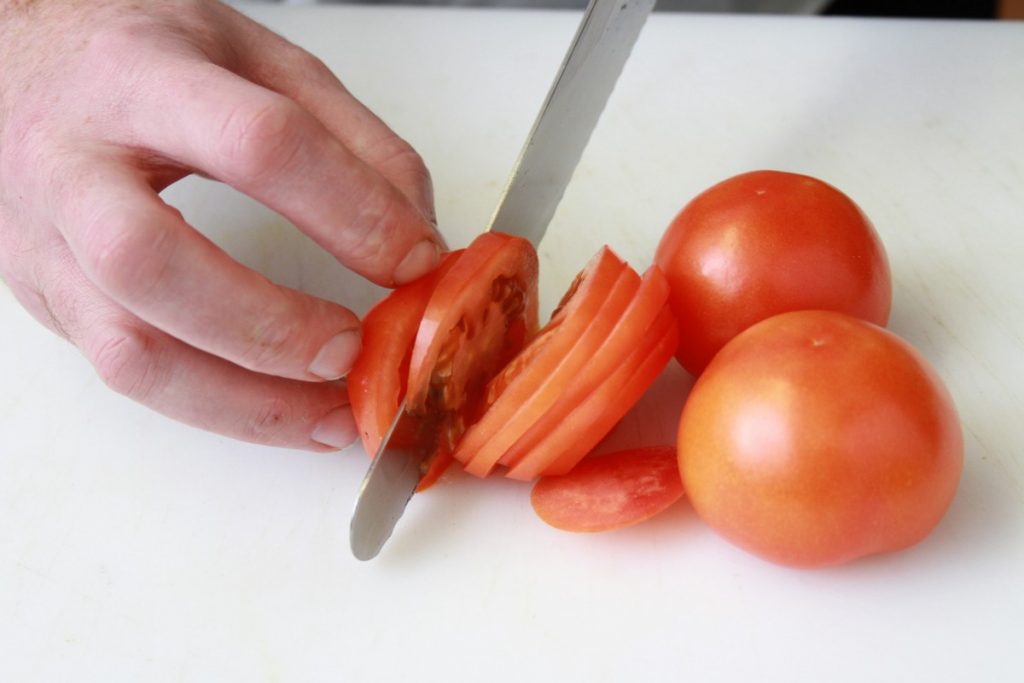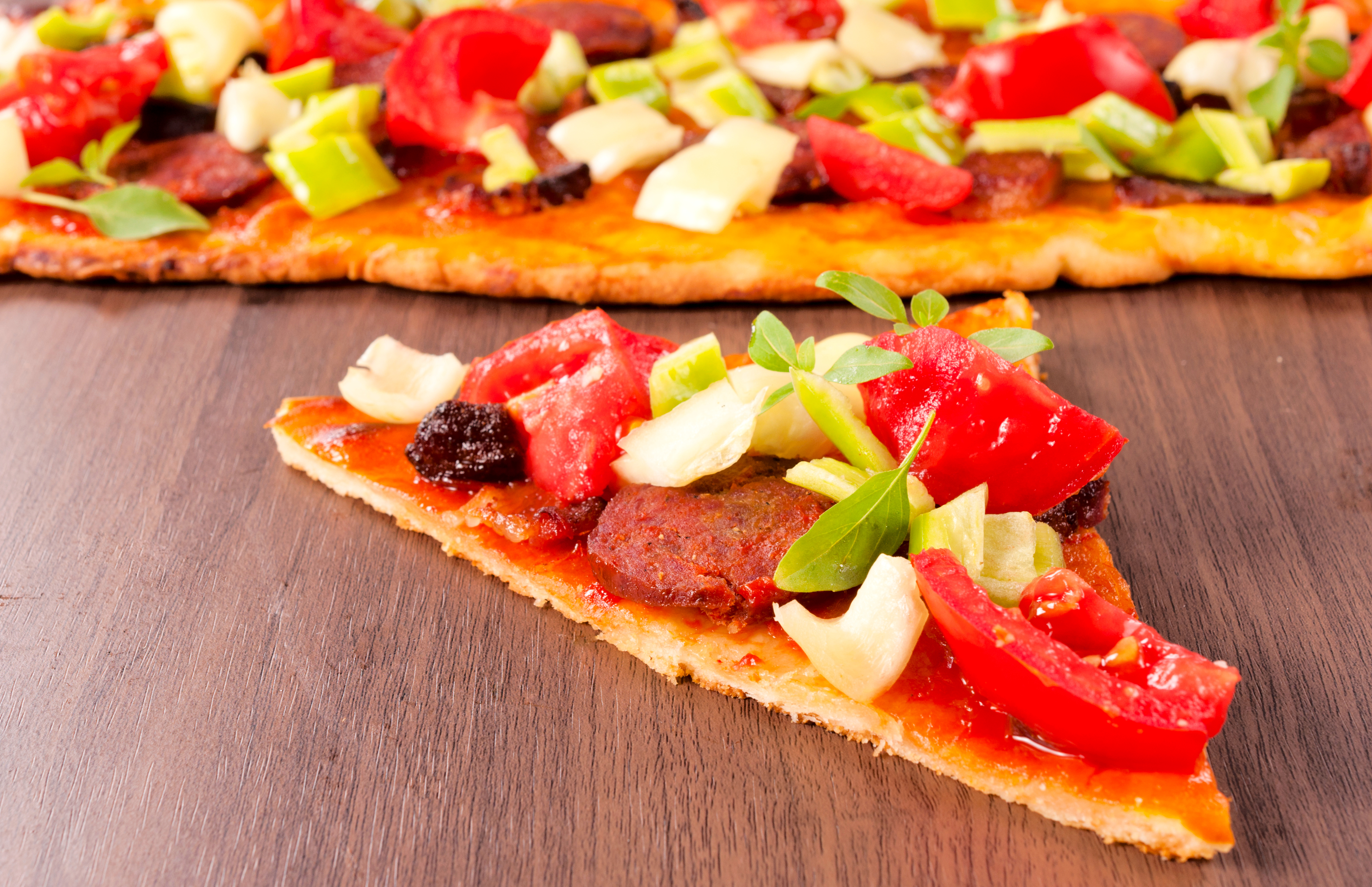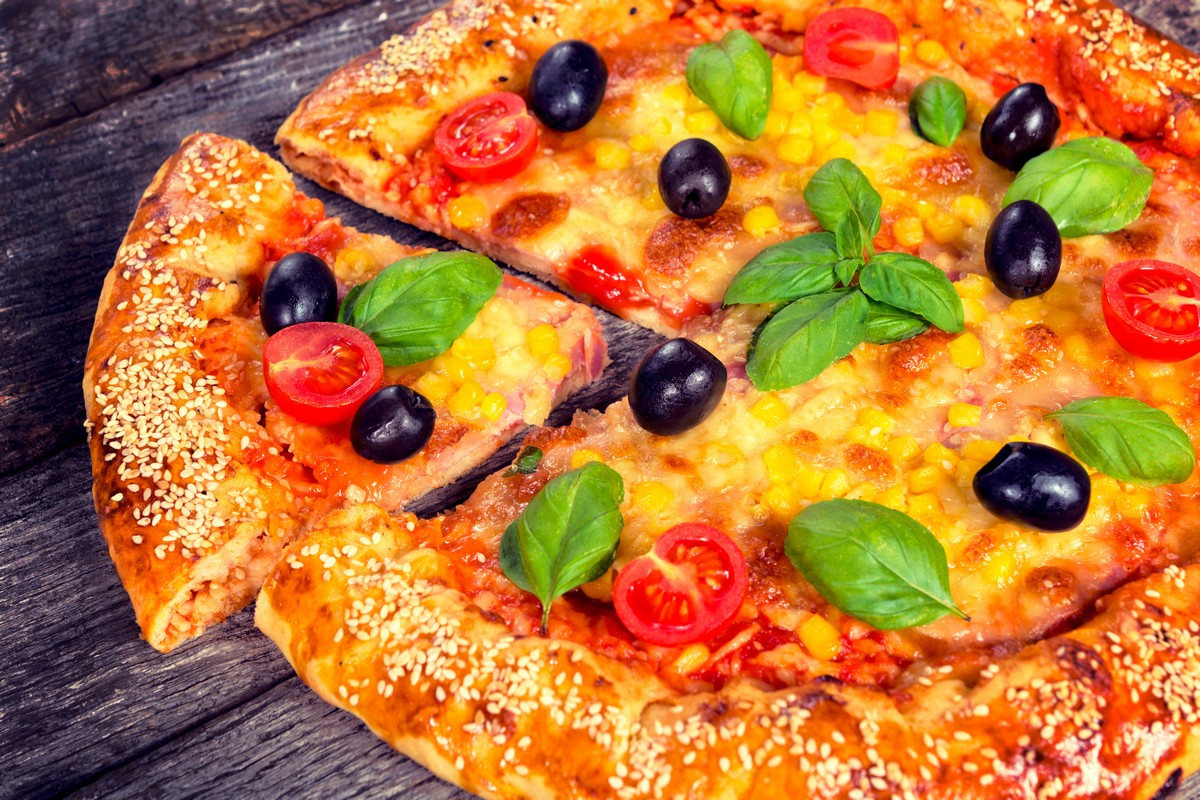Making your own pizza is a great way to make a budget-friendly dinner that’s also simple and easy. It also tends to be healthier and more delicious.
Pizza usually gets a raw deal when it comes to nutrition. But like so many other high-calorie and fat-laden dishes that have been adapted for a healthier diet, pizza can be reformed.
It’s not a rule that pizza has to have salty meats high in cholesterol and fat. You don’t need to use white flour on the crust, either. A few simple substitutions can make a healthy guilt-free homemade pizza that kids and adults will enjoy.
Start With the Crust

Ready-made crusts are fine. But you should choose a crust that uses whole grains, for example Boboli-brand whole wheat pizza crusts. Alternatively, you can also use the following instead of crust:
- Whole wheat bread
- Whole wheat (split) English muffins
- Crust
- Bread splices
- Whole wheat (split) bagels, large or mini bagels work fine
Some breads are higher in calories, so read the nutrition facts on the wrappers or just pick a personal favorite. The common denominator for high-calorie breads is usually whole grain flour.
When you’re ready, place the crust, bread slices, or split breads on a cookie sheet or pizza pan.
No Sauce? No Problem

Jar sauces are not that bad if used sparingly. 1/4 Cup Ragu Pizza Sauce has only 30 calories. But why use sauce at all? For a slight change of taste, try salsa. This sauce alternative comes with about 20 calories per 1/4 cup. Better yet, thinly sliced tomatoes work just fine, especially on individual pizzas made with English muffins. Sprinkle a little oregano on top of the tomato for a great sauce substitute.
Add One or More Favorite Vegetable Toppings
Black olives contain a good amount of iron, and 5 large olives equals 25 calories. Don’t stop there, however! You should also try other raw vegetables for a little added crunch and flavor:
- Mushrooms
- Banana peppers, bell peppers, jalapeno peppers
- Pineapple
- Onion slices
- Black olives
- Chopped cauliflower
- Spinach leaves
- Chopped broccoli
Go Easy on the Meats and Cheese
Meats are not totally off-limits, of course. But instead of piling on the pepperoni, why not use some of the following healthier alternatives:
- Deli-thin sliced turkey
- Chicken chunks
- Steak or beef strips
- Lean ham
You can also usually find grilled chicken and steak strips in the frozen food section of your local grocery store.
If you’re someone who absolutely needs to have pepperoni, then use just a taste. Cut pre-sliced rounds into halves or quarters. Then, use only a fraction of what you would normally use.
Seafood-lovers might like adding cooked shrimp and garlic in place of other meats for a seafood pizza.
Finely shredded cheese comes in low-fat choices. But be careful to sprinkle lightly on top of the pizza. Another cheese trick: Don’t buy individual packages of cheddar and mozzarella cheeses. Instead, buy one package of pizza cheese. Applied to the pizza with a light hand, you can use half the usual amount of cheese just by buying the one package.
Baking Instructions
- Preheat the oven to 375 degrees. If you’re using a wood-fired oven, make sure to choose your firewood appropriately.
- Place the assembled pizza(s) on a baking sheet or pizza pan. Then, place the pan on the middle rack in the oven.
- Bake until cheese is melted and bubbly. This takes about 10-12 minutes.
- Remove from oven.
- Enjoy. Serve with a salad for dinner. Alternatively, serve smaller portions as snacks for movie night.
- Refrigerate leftovers.
Buying pizza ingredients is a great way to teach kids about grocery shopping and nutrition. Personal-sized pizzas allow children to make their own creations, using toppings they like. Children who help in the kitchen are more apt to eat what they make themselves, even when they’re trying new ingredients such as vegetable toppings.
Healthier alternatives result in meals that kids and adults can enjoy without the guilt. As an easy dinner or as a snack on movie night, homemade pizza earns a place at the top of the favorites list.




